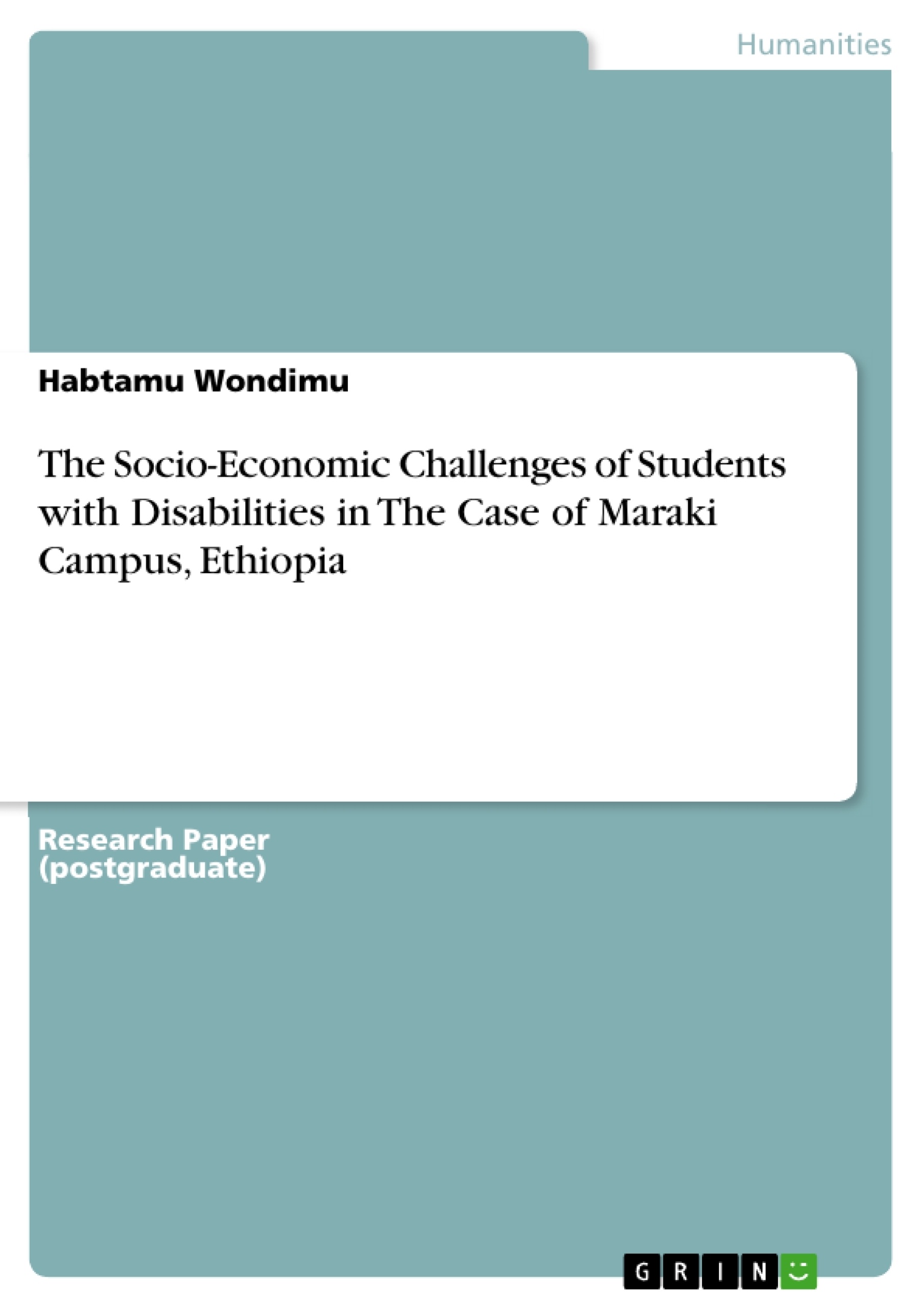The general objective of this study is to examine the socio-economic challenge of students with disability in the University of Gondar in the case of Maraki campus. According to world report on Disability, more than one billion humans or 15% of the world’s population stay with some shape of disability, of whom, nearly 200 million ride considerable difficulties in functioning. In the years ahead, incapacity will be an even larger situation because its incidence is on the rise. This is due to getting older populations and the greater danger of disability in older people as nicely as the global increase in continual fitness prerequisites such as diabetes, cardiovascular disease, cancer and mental fitness problems.
People with disability are considered ugly, and they are not welcome in society. People say they have the works of the spirit in them. Because of society‘s influence, a family with a child who has disability considers this child as a burden. In most places, a family hides their child for fear of being outcasts in the village. They would not consider them as useful to the community. Some think they are intellectually impaired too. In most cases, disabled children grow up learning from their parents that they are not worthy of mixing with other kids their age. The children accept the norm and believe they are cursed and under the punishment of God.
People with bodily disabilities have skilled slender chances to enjoy college environments or practices due to fewer priorities given by way of academic providers to problems that might also guide the disabled in particular in developing nations in areas such as curriculums, instructing and studying materials, infrastructure, unique programs such as sports and games, environmental troubles and the normal high-quality of education. According to the Education for All (EFA) Global Monitoring Report 2010 reaching the marginalized youngsters with disabilities remains one of the most important problems leading to huge exclusion of the group from nice schooling.
Inhaltsverzeichnis (Table of Contents)
- Abstract
- Introduction
- Objective of the study
- General objective
- Review of related literature
- Social challenges of disability
- Economic challenges of students with disabilities
- Research Methodology
- Background of the study area
- Sampling Techniques
- Data Sources
- Data collection Instruments
- Method of Data Analysis
- Results and Discussion
- Conclusion and Recommendations
- References
Zielsetzung und Themenschwerpunkte (Objectives and Key Themes)
This research study aims to assess the socio-economic challenges faced by students with disabilities at the University of Gondar's Maraki campus in Ethiopia. The research seeks to understand the barriers these students encounter during their studies and explore potential solutions to improve their educational experience.
- Access to quality education for students with disabilities
- Social inclusion and the challenges of stigma and discrimination
- Economic barriers and financial hardships faced by students with disabilities
- The impact of physical infrastructure on the accessibility of education
- The need for supportive policies and interventions to address the needs of students with disabilities
Zusammenfassung der Kapitel (Chapter Summaries)
The introduction chapter provides a background on the global prevalence of disability and discusses the societal and personal challenges faced by individuals with disabilities, particularly in developing countries. It highlights the need for inclusive education systems to address the specific needs of students with disabilities. The chapter on the research methodology details the study design, data collection methods, and data analysis techniques employed in the research.
Schlüsselwörter (Keywords)
This study focuses on the challenges faced by students with disabilities in accessing quality education. Key concepts explored include socio-economic barriers, social exclusion, accessibility, and the impact of disability on educational attainment. The research highlights the importance of inclusive practices, supportive environments, and policy interventions to ensure equal opportunities for students with disabilities.
- Quote paper
- Habtamu Wondimu (Author), 2020, The Socio-Economic Challenges of Students with Disabilities in The Case of Maraki Campus, Ethiopia, Munich, GRIN Verlag, https://www.grin.com/document/962470



